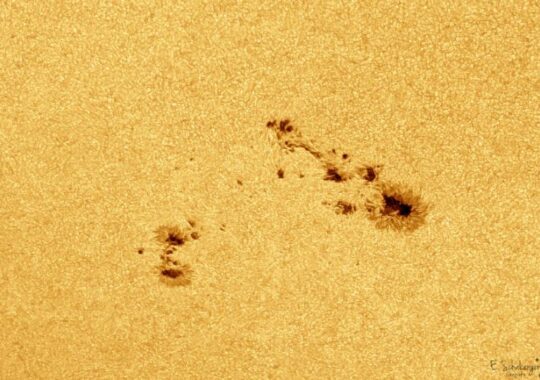Researchers have noticed interestingly the weak waves brought about by the movement of dark openings that are delicately extending and pressing everything in the universe.
They said on Wednesday that they were able to “hear” low-frequency gravitational waves, which are changes in the fabric of the universe caused by huge objects colliding in space and moving around.
Maura McLaughlin, co-director of NANOGrav, the research collaboration that published the findings in The Astrophysical Journal Letters, stated, “It’s really the first time that we have evidence of just this large-scale motion of everything in the universe.”
Einstein predicted that extremely heavy objects would cause ripples that would propagate throughout the universe’s fabric when they moved through spacetime. These ripples are sometimes compared to the universe’s background music by scientists.
In 2015, researchers utilized a trial called LIGO to distinguish gravitational waves interestingly and showed Einstein was correct. Be that as it may, up until this point, those techniques have just had the option to get waves at high frequencies, made sense of NANOGrav part Chiara Mingarelli, an astrophysicist at Yale College.
According to Mingarelli, those brief “chirps” originate at specific times when relatively small black holes and dying stars collide.
Scientists were looking for waves at much lower frequencies in the most recent study. These sluggish waves can require years or even a very long time to cycle all over, and presumably come from probably the greatest items in our universe: billions of times as big as our sun are black holes.
All over the universe, galaxies are constantly colliding and merging. Szabolcs Marka, an astrophysicist at Columbia University who was not involved in the research, explained that scientists believe that the massive black holes at the centers of these galaxies also come together and get locked into a dance before eventually collapsing into one another.
The dark openings ship off gravitational waves as they circle around in these pairings, known as doubles.
“Supermassive dark opening pairs, gradually and smoothly circling one another, are the tenors and bass of the enormous show,” Marka said.
These enormous ripples could not be captured by Earth’s instruments. So “we needed to fabricate an indicator that was generally the size of the world,” said NANOGrav scientist Michael Lam of the SETI Establishment.
This week’s findings included 15 years’ worth of data from NANOGrav, which has been looking for waves with telescopes all over North America. Additionally, studies were published by teams of gravitational wave hunters from Europe, India, China, and Australia.
The scientists used telescopes to look at pulsars, which are dead stars that move around in space like lighthouses and emit flashes of radio waves.
According to NANOGrav member Sarah Vigeland, an astrophysicist at the University of Wisconsin-Milwaukee, these bursts are so frequent that scientists know precisely when the radio waves are supposed to reach our planet. “Like a perfectly regular clock ticking away far out in space,” she said. In any case, as gravitational waves twist the texture of spacetime, they really change the distance among Earth and these pulsars, losing that consistent beat.
By examining small changes in the ticking rate across various pulsars — for certain heartbeats coming somewhat early and others arriving behind schedule — researchers could see that gravitational waves were going through.
The NANOGrav group checked 68 pulsars across the sky utilizing the Green Bank Telescope in West Virginia, the Arecibo telescope in Puerto Rico and the Extremely Huge Cluster in New Mexico. Observed by telescopes located all over the world, other teams discovered similar evidence from dozens of other pulsars.
Marc Kamionkowski, an astrophysicist at Johns Hopkins University who was not involved in the research, stated that this method has not yet been able to precisely pinpoint the source of these low-frequency waves.
All things considered, uncovering the consistent murmur is surrounding us — like while you’re remaining in a party, “you’ll hear these individuals talking, yet you will not hear anything specifically,” Kamionkowski said.
The foundation clamor they found is “stronger” than certain researchers expected, Mingarelli said. This could really intend that there are something else, or greater, dark opening consolidations occurring out in space than we suspected — or highlight different wellsprings of gravitational waves that could challenge how we might interpret the universe.
The goal of this type of gravitational wave research is to expand our understanding of the universe’s largest objects. It could open new ways to “infinite antiquarianism” that can follow the historical backdrop of dark openings and systems blending surrounding us, Marka said.
Vigeland stated, “We’re starting to open up this new window on the universe.”
Disclaimer: The views, suggestions, and opinions expressed here are the sole responsibility of the experts. No Clear Insight Research journalist was involved in the writing and production of this article.





